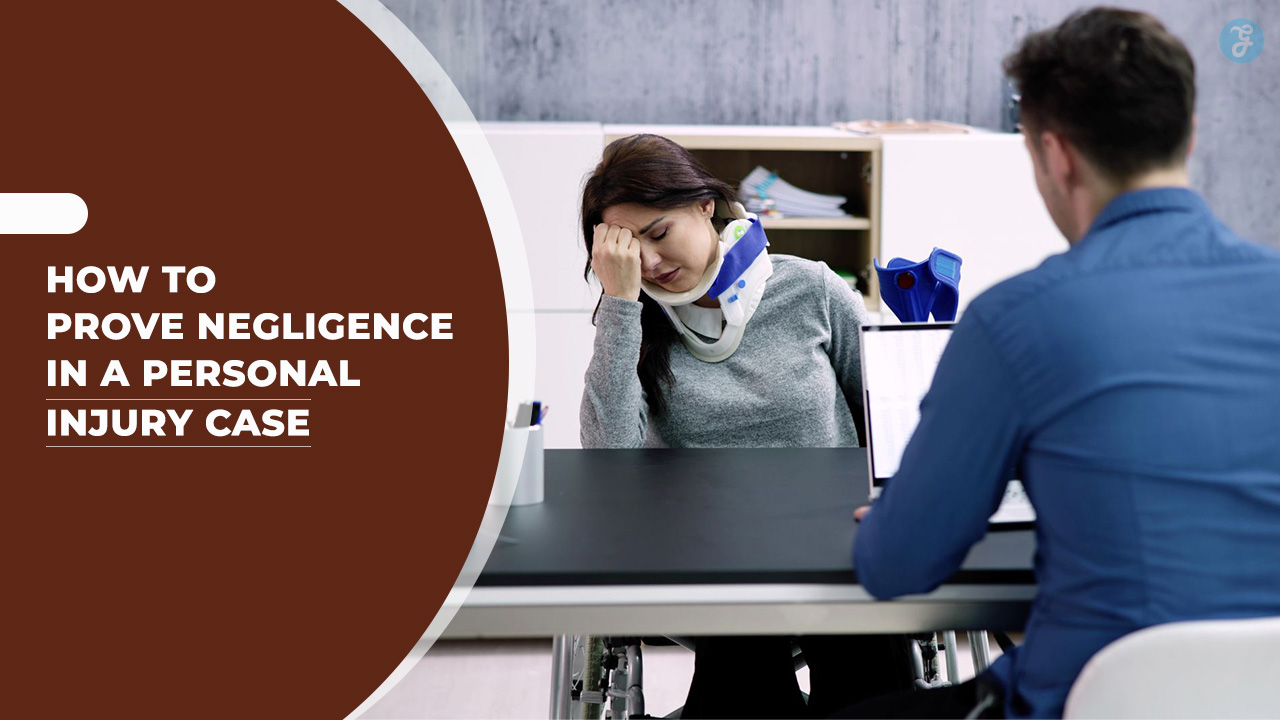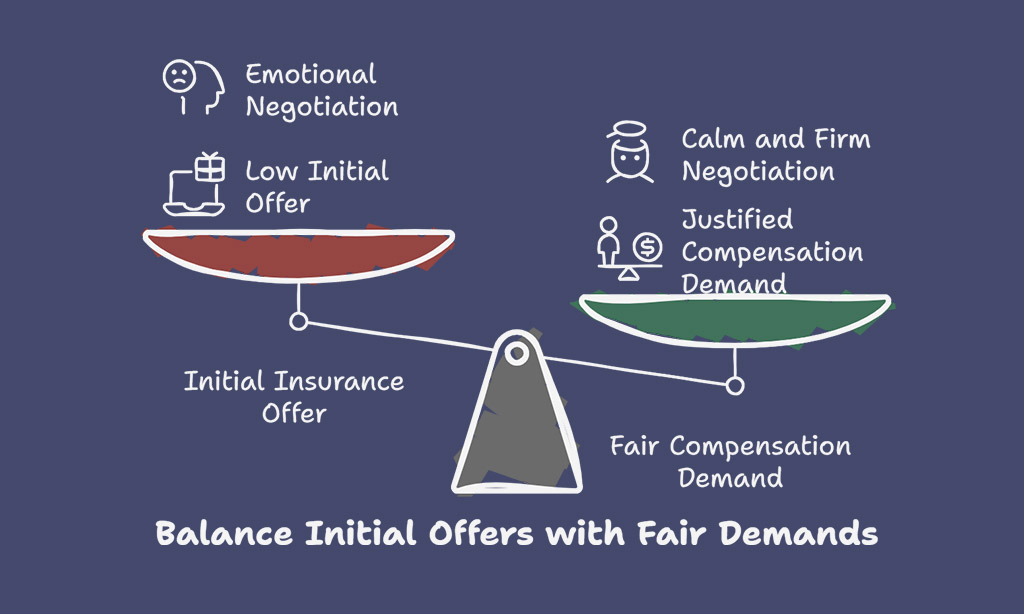Getting hurt because someone else was careless is frustrating. You might feel confused and unsure how to make things right. Maybe it was a car accident, a slip and fall, or even medical malpractice.
Whatever the reason, proving who’s at fault can seem tricky.
Negligence is key in personal injury cases. It means showing that someone didn’t act with reasonable care and caused harm as a result. This blog will explain how to prove negligence step by step so you can build a strong claim and understand your rights.
Keep reading—you’ve got this!
Key Takeaways
- To prove negligence, show four parts: duty of care, breach of duty, causation, and damages. These explain how someone’s careless actions caused harm.
- Evidence like police reports, photos, witness statements, and medical records is key to building a strong case.
- Seek medical help right after an accident to document injuries. Report the incident and keep all related documents safe for proof.
- Hire a personal injury lawyer for guidance and legal help. Many work on contingency fees—no payment unless you win compensation.
- File your claim within the time limit set by your state (often 2–6 years). Missing this deadline can end your chance for justice or compensation.
The Four Elements of Negligence
Proving negligence needs four key parts. Each part shows how someone failed their legal duty, causing harm.
Duty of Care
A duty of care means acting in a way that avoids hurting others. For example, drivers must stop at red lights to prevent accidents. Judges decide if someone had a legal obligation in each case.
This duty applies where relationships exist, like between doctors and patients or store owners and customers. If harm happens because this responsibility is ignored, the person who caused it may be legally responsible for damages.
Breach of Duty
Failing to act with reasonable care can lead to a breach of duty. This means the responsible person did not follow the standard of care expected in that situation. For example, a driver running a red light endangers others and breaks their legal obligation to drive safely.
Juries often decide if someone breached their duty. They look at what actions a prudent person would take to avoid causing harm. If harm could have been reasonably foreseeable, the defendant might be held legally liable.
Proving this is key in negligence cases like slip and fall accidents or auto accidents.
Causation
Cause-in-fact means the defendant’s action directly led to the injury. For example, a driver running a red light causes a car crash and someone gets hurt. The “but-for” test applies here: but for the driver’s action, no one would have been injured.
Proximate cause looks at whether the harm was foreseeable. Running a red light makes crashes likely, so injuries from such an act are predictable. The law holds people responsible only for reasonably expected results of their behavior—not random or far-off events.
Damages
Damages mean harm that happened because of someone’s negligence. This can include medical bills, lost wages, or even fixing property damage like a smashed car. For example, if you broke your arm in an accident and missed work, those costs count as damages.
Victims can also claim pain and suffering or emotional distress. These non-economic damages cover things like physical pain or mental struggles after the injury. Proving these requires solid proof, such as doctor reports or witness statements.
Types of Evidence Needed to Prove Negligence
Police reports give details about the accident. They often include witness names and statements, which can back your personal injury claim. Video footage or photos can also show what happened and prove negligent behavior.
Medical records tie your injuries to the event. These might outline pain, suffering, or even emotional distress caused by the incident. Pay stubs help show lost income due to recovery time.
Expert opinions on safety violations or faulty equipment can seal the case against a liable party.
Steps to Build a Strong Personal Injury Case
A strong case needs good preparation and clear evidence. Follow these steps to make your personal injury case solid:
- Seek medical help right after the accident. This documents your injuries and proves they happened.
- Report the incident to the police if needed. Police reports are important proof.
- Take photos of the scene, damage, and injuries. They help show what happened.
- Collect witness contact information. Eyewitnesses can support your story in court.
- Inform your insurance company about the accident quickly. Provide them with basic facts.
- Keep all medical records and bills safe. These show how much you spent on care.
- Track lost income from missed work days due to the injury or recovery time.
- Consult a skilled personal injury lawyer early on for legal advice and guidance.
- File your claim within the statute of limitations for your state to avoid losing rights.
- Stay organized with all paperwork like receipts, police reports, and expert opinions.
When to Seek Legal Assistance
Contact an attorney after a serious accident or injury. Delays can harm your personal injury case due to the statute of limitations. Most states allow two years to file personal injury lawsuits, but this varies.
Speak with a lawyer if someone else’s actions caused your pain and suffering. Attorneys help with gathering police reports, witness statements, and medical records. Many offer a free consultation and work on contingency fees—so you owe nothing unless you win financial compensation!
Common Challenges in Proving Negligence
Proving negligence isn’t always easy. Accident victims must show the liable party failed in their legal obligation, like providing reasonable care. Witness statements may not align or be unclear, making it harder to prove fault.
Missing police reports or medical records can weaken personal injury claims too.
The statute of limitations is another hurdle. Every state sets a time limit for filing claims, often between two and six years. Filing late could erase your right to compensation entirely.
Comparative negligence laws also complicate things—if you share any fault, your financial compensation may shrink under modified comparative negligence rules!
Takeaways
Proving negligence takes time, effort, and the right proof. You’ll need to show duty, breach, cause, and harm clearly. With strong evidence like medical records or police reports, your case gets stronger.
A personal injury lawyer can guide you through tough spots. Don’t wait too long—statute limits could close your chance to act!
FAQs
1. What is negligence in a personal injury case?
Negligence happens when someone fails to use reasonable care, causing harm to another person. In a personal injury case, you must prove the liable party had a legal obligation and breached their duty of care.
2. How do you prove negligence in court?
To prove negligence, you need evidence like medical records, police reports, and witness statements. You also have to show actual cause, proximate cause, and damages like lost income or pain and suffering.
3. What types of damages can accident victims claim?
Accident victims can seek compensatory damages for financial losses like medical bills or property damage. Non-economic damages cover emotional distress or pain and suffering. Punitive damages may apply if the liable party acted with wanton disregard for safety.
4. Can modified comparative negligence affect my compensation?
Yes! If you’re partly at fault under modified comparative negligence laws, your compensation might be reduced based on your share of responsibility.
5. Why are expert opinions important in a personal injury case?
Expert testimony helps explain complex issues like medical malpractice or product liability to support your claim during settlement negotiations or trial.
6. How long do I have to file legal action for a personal injury case?
The statute of limitations varies by state but sets strict deadlines for filing lawsuits after accidents involving premises liability, wrongful death claims, slip and fall cases, or motorcycle accidents.










































